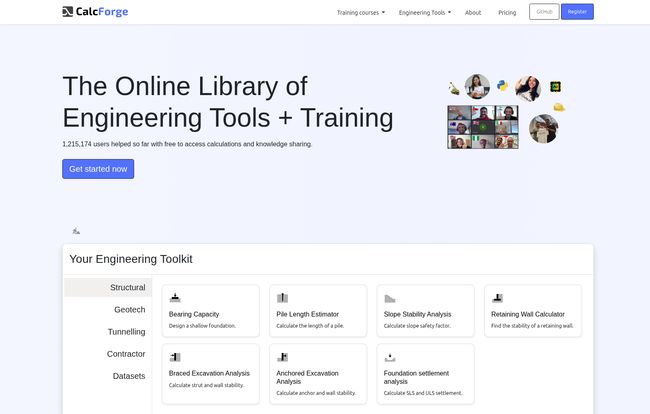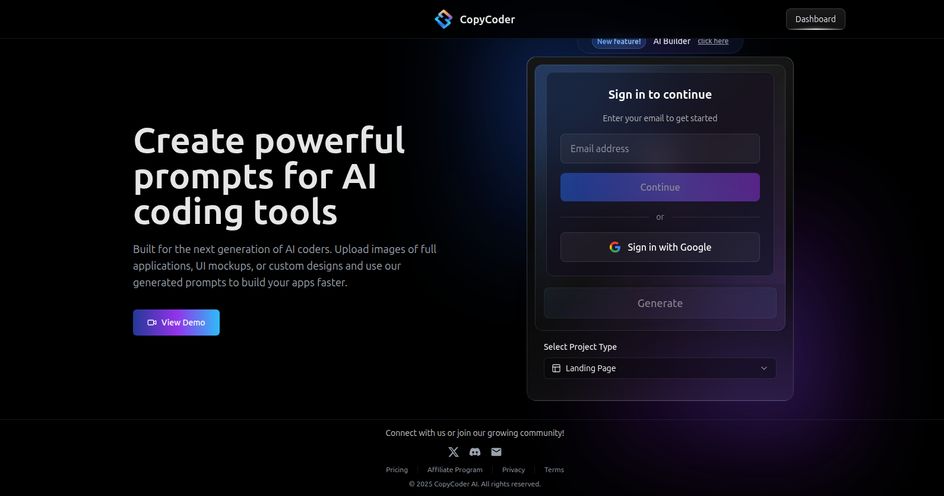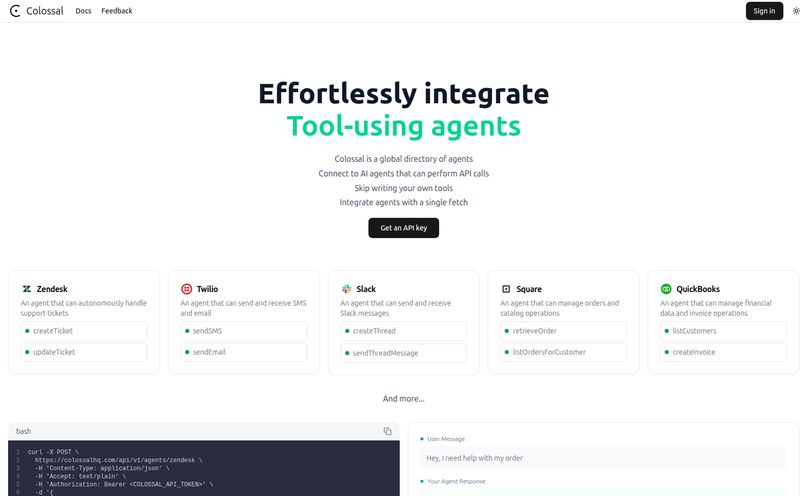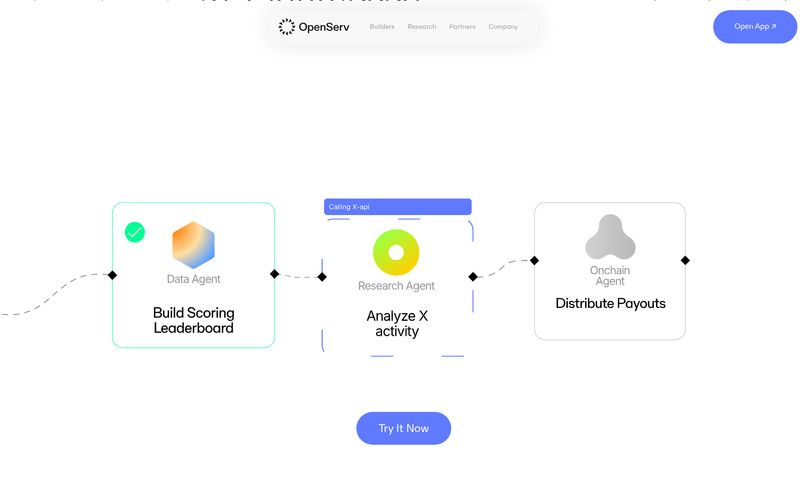I’ve been in the SEO and digital space for years, but my roots, my first love, were in things a bit more… tangible. Structures, systems, the stuff that makes the world work. And in that world, there’s always been this one massive barrier to entry: the software. Remember those clunky, five-figure software suites from university or your first junior engineering gig? The ones that required a dedicated machine, a physical license dongle (seriously?), and a prayer that it wouldn’t crash before you hit save.
So, when I stumble across something like CalcForge, I get a little bit giddy. It feels like a breath of fresh air. It’s a platform that bills itself as an “online library of engineering tools,” but that’s underselling it. What it really represents is a shift in thinking, a move toward a more collaborative, accessible, and frankly, modern way of doing engineering. But is it just a cool idea, or is it a genuinely useful tool for professionals in the trenches? Let’s take a look.
What Exactly is CalcForge? (And Why Should You Care?)
At its heart, CalcForge is an open-source engineering software platform. Think of it less like a single, monolithic program and more like a bustling, shared workshop. It’s packed with free engineering calculators for civil, mechanical, and electrical designers, but the magic is that it’s not a closed box. It's a collaborative environment built on Python, with its code living openly on GitHub for anyone to see, use, and improve.
This isn’t just about getting free tools. It's about building the future of construction software together. It brings the collaborative spirit we see in the software development world—think Linux or WordPress—to the traditionally conservative field of engineering. And with over a million users having apparently contributed in some way, it's not some niche pet project. It has momentum.

Visit CalcForge
The Good Stuff: Where CalcForge Shines
Okay, so what makes this platform stand out from the crowd of existing calculators and spreadsheets? For me, it boils down to a few key things.
The Price is Right (Literally Free)
This is the big one, the headline act. The core of CalcForge is free and open-source. This single fact demolishes the biggest hurdle for students, recent grads, freelancers, and small firms. You can get started, run real calculations—like bearing capacity, slope stability, or retaining wall analysis—without having to sell a kidney. This democratization of tools is, in my opinion, its most powerful feature. It’s not just about saving money; it’s about enabling innovation and learning for people who were previously priced out.
A Collaborative Playground for Engineers
Here’s where things get really interesting. CalcForge isn't just a place to use tools; it’s a place to build them. The integration with Python and GitHub means if you’ve got some coding chops, you can create your own calculators, automate tedious tasks, and share them with the community. They even offer training to teach you how to do it. This transforms you from a passive user into an active creator. I've always felt that the best way to truly understand a calculation is to build the tool that performs it. CalcForge gives you the framework to do just that.
A Quick Look at the CalcForge Pricing Model
“Free” is great, but platforms need to survive. So how does CalcForge keep the lights on? They operate on a classic freemium model, which I think is incredibly fair. Here’s a simple breakdown:
| Plan | Cost | Key Features |
|---|---|---|
| Free | $0 / month | Limited engineering tools, no training, no datasets. |
| All-Access | $8 / month (billed annually) | Full access to 30+ tools, 2 training qualifications, datasets, code snippets. |
Honestly, that All-Access pass for $8 a month is a pretty incredible value proposition. If you’re a practicing professional, that’s less than a couple of fancy coffees. For full access to an expanding toolset, plus training and datasets, it feels like a no-brainer. This model allows them to fund development while keeping the platform accessible to everyone.
Let’s Be Real: The Potential Downsides
Okay, nothing’s perfect, right? As exciting as CalcForge is, we have to look at it with clear eyes. The very thing that makes it great—its open, community-driven nature—is also its potential Achilles' heel.
Since it relies on community contributions, the quality and maintenance of the tools can vary. This isn't a polished, top-down product from a huge corporation with a massive QA department. You're putting your trust in the collective, which can be fantastic, but it also means you should always double-check the results. You know, like any good engineer would anyway.
Also, to really get the most out of the platform's customisation potential, you're going to need some programming knowledge, specifically Python. That’s not a con for everyone—for some, it's the main draw—but it’s an important expectation to set. It's a tool for builders, not just users. Finally, the website itself notes it’s still under development. It's a living project, so you might run into the occasional rough edge.
Who is CalcForge Actually For?
I see a few groups who could get massive value from this:
- The Student or Recent Grad: This is a godsend. A free, powerful set of tools to learn with, experiment on, and even build a portfolio of projects without going into debt.
- The Freelance Engineer: For a one-person shop or small consultancy, this is an incredibly cost-effective way to get a solid foundation of calculation tools. The All-Access plan is practically a rounding error in the budget.
- The Tinkerer & The Innovator: This is for the engineer who looks at a repetitive task and thinks, “There has to be a better way.” If you enjoy coding and want to build bespoke solutions for your niche, this is your sandbox.
- The R&D Team at a Large Firm: Big companies like AECOM and WSP are already listed as being among those who trust the platform. It's a perfect environment for exploring new calculation methods or building internal tools without the red tape of corporate software procurement.
The Power of the Crowd
I keep coming back to the community aspect. The platform mentions a Discord community with over 400+ members interested in AI and Construction. That might not sound like a huge number, but in a specialized field, that’s a concentrated pool of brainpower. The real value of projects like this often isn't just the software itself, but the forum, the Discord channel, the GitHub issues page where people are solving problems together. That’s where the magic happens and where the platform will ultimately live or die.
Frequently Asked Questions about CalcForge
- What exactly does 'open-source' mean here?
- It means the source code for the calculators and the platform is publicly available (on GitHub). You can inspect it to see exactly how calculations are being performed, suggest changes, or even use the code to build your own version. It’s all about transparency and collaboration.
- Can I add my own calculators to CalcForge?
- Yes! That's one of the main attractions. If you have Python skills, you can develop your own tools using their templates and potentially contribute them back to the community.
- How does CalcForge make money if so much is free?
- They use a 'freemium' model. The basic tools are free, but they charge a subscription fee ($8/mo for the All-Access plan) for their full suite of 30+ tools, training qualifications, construction datasets, and code snippets to help you build.
- Is it difficult to use if I don't know Python?
- Not at all. You can use the existing library of calculators without writing a single line of code. The Python part is for those who want to customize, automate, or build new tools from scratch.
- How is this related to Civils.ai?
- Based on the copyright notice at the bottom of their site (© Copyright 2022 All Rights Reserved by Civils.ai PTE LTD), CalcForge appears to be a project or platform developed and maintained by the same company, Civils.ai.
- Can I rely on the quality of these tools for professional work?
- That’s the million-dollar question. Since it's community-driven, the onus is on you, the professional engineer, to verify the results. The transparency of the open-source code helps a lot here. It’s a powerful tool, but as with any engineering software, it's not a substitute for professional judgment.
So, What's the Verdict?
I'm genuinely excited about CalcForge. It’s not trying to be a direct, feature-for-feature competitor to something like a high-end finite element analysis package. Instead, it’s carving out a new space. It’s a platform for everyday engineering calculations, for learning, and for building. It’s messy, it’s growing, and it's built on an idea that I think the engineering industry desperately needs: collaboration over competition, access over exclusivity.
Will it replace your entire software stack tomorrow? Probably not. But could it become one of the most valuable tools in your digital toolkit, especially for the price? Absolutely. This feels like the start of something important, and I’ll be watching its development very closely.
Reference and Sources
- CalcForge Official Website
- CalcForge Pricing Page
- Civils.ai GitHub Repository (Associated with CalcForge)



